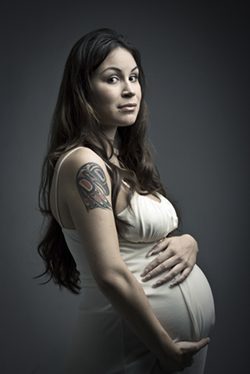New research reveals surprising facts about LGB youth pregnancy
Dr. Elizabeth Saewyc recently spoke to Curve about her research in the field of youth health, where she has put special emphasis on the emotional and sexual well-being of minority groups. Her recent study, funded by Canada’s University of British Columbia, pulled up some surprising numbers about the rates of lesbian, gay, and bisexual teen pregnancy, wherein sexually active queer teens reported higher pregnancy rates than their straight peers. Saewyc is an associate professor at the UBC School of Nursing, as well as a Chair in Applied Public Health Research and a Research Director at the McCreary Center Society.
Your study pointed to a number of factors that could result in higher pregnancy risks for LGB teens: substance abuse, sexual marginalization, the perceived need for “camouflage”, lack of sex education, and a probable history of childhood maltreatment. Is there any one factor that appears to trump the rest?
There are a lot of different factors that help explain the pregnancy risk, and I really cannot say which one is the most common or more likely, because in part some of those questions are not asked on large population surveys. So we didn’t ask, what was your sex education like, or did you even have any. We don’t ask about how stigmatized do you feel as an LGB youth. We don’t ask why you got pregnant. So for a lot of those kinds of things, we can’t see how common those are. We’ve got ideas and plans of what we’d like to study. You know, how we’d like to answer those questions.
What aspect in particular needs further research?
I would say that one of the things that we need to pay more attention to, is the issue of coercion in sex, for all orientations. We have unacceptable levels of sexual abuse and sexual violence, sexual assault, forced sexual intercourse or people being pressured into having sex. We need to pay more attention to how much we’re tolerating sexual violence.
What can individuals and families do to increase visibility and tolerance in schools and communities?
Certainly one of the things that can be done, is that families can be supportive of their children and their teens. And they can advocate with the school for allowing the kinds of supportive policies, like Gay-Straight Alliances. They can encourage schools to actually allow the kinds of courses that would be helpful to kids. Parents can be amazingly influential on the content that is taught in sexual education classes. They can have a really important role in advocating that the school provides accurate and comprehensive sex education that includes all orientation groups.
In the results of the study, bisexual male and female teens reported higher pregnancy involvement than their gay or heterosexual peers. What does that say to you about bisexual youth visibility in public policy and education?
I can only speculate. Adolescence is a developmental stage and so some of the teens who are identifying as gay will eventually identify as bisexual, some of the people who are identifying as bisexual will identify eventually as lesbian. For all that, that people will frequently refer to sort of bisexual chic, that it’s sort of popular to claim to be bi. In our research, we’ve found that bisexually-identified teens are more likely to be excluded, more likely to be harassed. They are less visible.
Your study also points to a possible gap in targeting the needs of LGB teen parents. What further research and support do you hope to see for these youth?
I would very much like to see research among those teens who are involved in pregnancy and do become parents, what their lives are like, what motivates them. How did they make the decisions they came to, and how is their care? Parenthood automatically renders you invisible, at least as a teen. Because we don’t do artificial insemination of teens, the only way that someone can get pregnant is opposite-gender sexual behavior. Then, do our lesbian, gay, and bisexual teen parents end up being presumed to be heterosexual? What does that do in terms of our care of them and their children?
Do you have any upcoming projects?
I have been funded as part of my public health chair. There’s just a couple of us that focus on youth health, so one of the projects that is part of that chair grant is actually linking policies to health outcomes for teens. So looking at whether the schools that have gay-straight alliances have lower rates of harassment among youth. And whether there are fewer suicide attempts among the LGB youth in those schools. Looking at whether anti-bullying polices that include sexual orientation, or anti-homophobia appear to have a difference in terms of whether or not kids feel safe at school, whether there’s less harassment of LGB youth, and whether there’s less distress, and fewer suicide attempts in those schools. Here in Canada, we have legal marriage, and a variety of other interpretations of our charter of rights that make it really clear that lesbian, gay, and bisexual populations are citizens who have enjoyed the same kinds of rights as others. And that does change society and how we look at things in terms of how we treat people. But change happens slowly.
